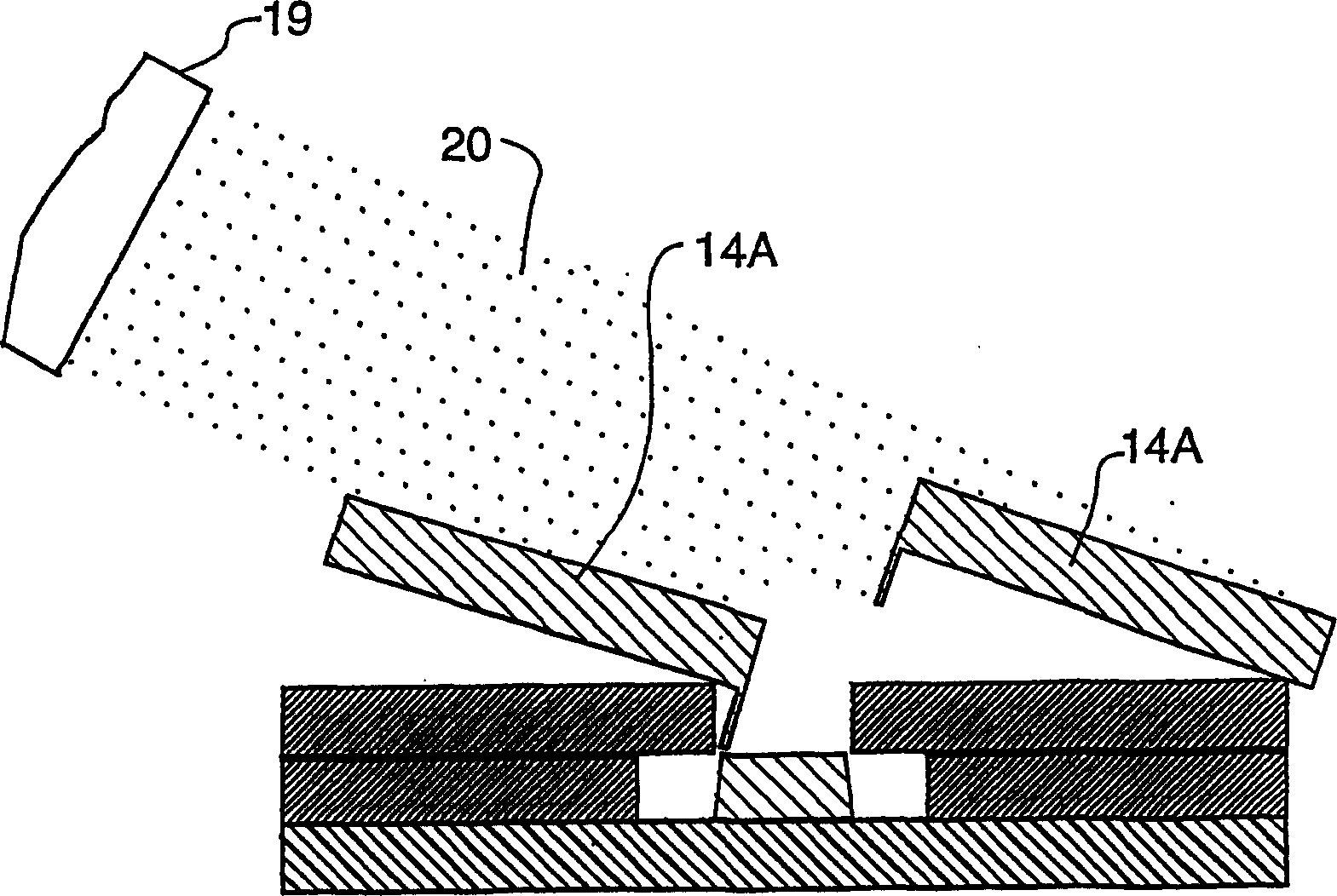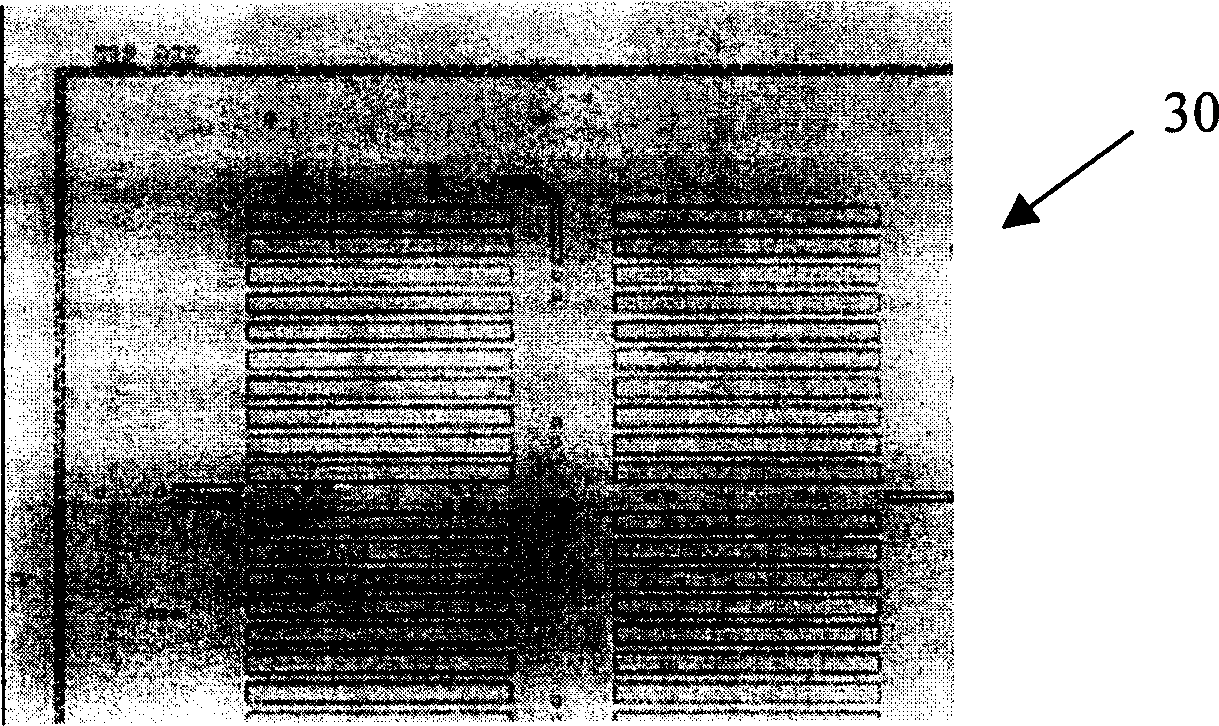Method for selective metal film layer removal using carbon dioxide jet spray
A metal film layer, high pressure carbon dioxide technology, used in semiconductor devices, electrical components, circuits, etc., can solve problems such as damage to metal conductors, and achieve the effect of accelerating solvent absorption
- Summary
- Abstract
- Description
- Claims
- Application Information
AI Technical Summary
Problems solved by technology
Method used
Image
Examples
Embodiment Construction
[0025] figure 1 A typical wafer to which a typical lift-off process has been applied to form a patterned conductor layer is shown. During this lift-off process, at least one layer of photoresist material 10 is deposited on the portion of wafer substrate 12 free of conductive material. The photoresist is exposed and developed in the following manner: Once the metal film material is deposited over the entire substrate surface in the metallization step, the metal film layer 14 deposited on the photoresist layer is separated from the metal conductor portion 16 deposited directly on the substrate. will be discontinuous. This allows subsequent removal of the metal film layer 14 on the photoresist, leaving the metal conductor 16 intact on the substrate, as desired by the patterning process.
[0026] The discontinuity between the metal conductor portion 16 and the metal layer 14 is preferably achieved by applying a layer of photoresist such that the sidewalls 18 of the photoresist d...
PUM
 Login to View More
Login to View More Abstract
Description
Claims
Application Information
 Login to View More
Login to View More - R&D
- Intellectual Property
- Life Sciences
- Materials
- Tech Scout
- Unparalleled Data Quality
- Higher Quality Content
- 60% Fewer Hallucinations
Browse by: Latest US Patents, China's latest patents, Technical Efficacy Thesaurus, Application Domain, Technology Topic, Popular Technical Reports.
© 2025 PatSnap. All rights reserved.Legal|Privacy policy|Modern Slavery Act Transparency Statement|Sitemap|About US| Contact US: help@patsnap.com



